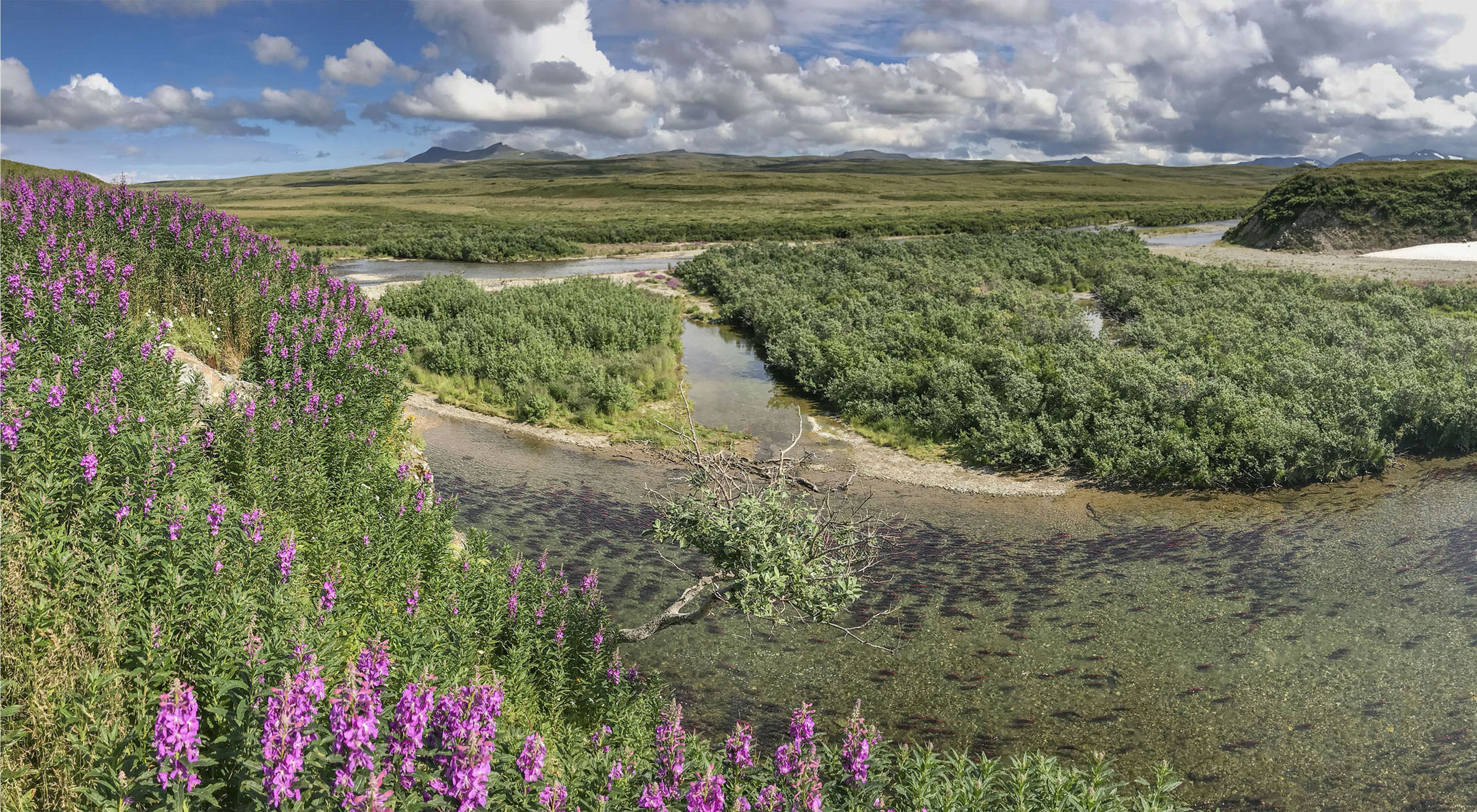TNC Applauds EPA Announcement for Alaska’s Bristol Bay
Permanent protections are the ultimate safeguard for communities reliant on healthy runs of wild salmon.
Media Contacts
-
Dustin Solberg
Media Contact
The Nature Conservancy in Alaska
Phone: (907)429-5103
Email: dsolberg@tnc.org
The U.S. Environmental Protection Agency (EPA) announced a key milestone in the critical effort to protect Alaska’s Bristol Bay region from the proposed Pebble Mine.
The agency will accept public comments through July 5 on whether to establish permanent safeguards for Bristol Bay. The EPA has the authority under section 404(c) of the Clean Water Act to halt or limit project development that is likely to result in any of a range of damages to freshwater, including harm to fisheries.
“The Nature Conservancy is pleased to see the EPA proceeding with Clean Water Act authority to protect the lands and waters of Bristol Bay,” said Elizabeth Kitchens, interim director for TNC in Alaska. “For many years, the region’s Indigenous communities have advocated for permanent protections for this place that has always sustained them. TNC is committed to honoring their tireless leadership in protecting Bristol Bay for future generations.”
The Bristol Bay region produces more wild salmon than anywhere else on Earth. The Indigenous caretakers of Bristol Bay—the Yup’ik, Dena’ina and Alutiiq people—continue to maintain a way of life sustained in part by healthy salmon populations. Bristol Bay is also the center of Alaska’s famed sustainable wild salmon industry. A small-boat commercial fishing fleet of about 2,000 independently owned vessels accounts for half of the world’s wild sockeye salmon harvest—supplying an industry valued at $2.2 billion annually. The region’s lakes and streams are among the world’s most legendary sportfishing waters, supporting a thriving tourism industry.
“Communities in Bristol Bay are committed to building on their bold vision for the region,” said Kitchens. “Yet this ongoing 20-year conflict over the proposed open-pit Pebble Mine has drawn precious time, energy and resources from local efforts to build thriving and sustainable communities. Enacting permanent protections now for the healthy Bristol Bay headwaters is a positive and absolutely critical step for the future.”
TNC’s ecological risk assessment completed in 2010 offered a comprehensive analysis of the proposed Pebble mine and a 2019 modeling exercise detailed the risk and likely harm from a mine tailings spill in the Nushagak River system.
Each year, the federal government issues about 74,000 permits giving the go-ahead to proposed activities in the United States that have the potential to affect water quality. Since 1972, 13 projects have reached a 404(c) final determination. EPA action in Bristol Bay would mark only the 14th instance of 404(c) action in the United States—a testament to the risk large-scale mining poses to the Bristol Bay watershed.
TNC's Alaska chapter began working in partnership with individuals and regional organizations in Bristol Bay 30 years ago. These long-term efforts include protecting healthy, free flowing rivers for fish in salmon streams and scientific projects to assess the risk of large-scale mining in the headwaters of the Kvichak and Nushagak rivers.
The Nature Conservancy is a global conservation organization dedicated to conserving the lands and waters on which all life depends. Guided by science, we create innovative, on-the-ground solutions to our world’s toughest challenges so that nature and people can thrive together. We are tackling climate change, conserving lands, waters and oceans at an unprecedented scale, providing food and water sustainably and helping make cities more sustainable. Working in more than 70 countries and territories, we use a collaborative approach that engages local communities, governments, the private sector, and other partners. To learn more, visit nature.org or follow @nature_press on Twitter.
